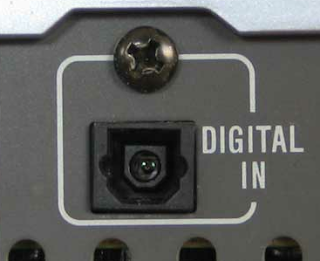- A sweet TV like this 55" LG 3D LED Beast
- A Home Theater PC (HTPC) like I describe in this post
- A fast, Wireless-N home router that won't crap out on you
- A reliable network attached storage device (NAS)
- A pair of 2TB Western Digital hard drives
- A handful of Ethernet cables
Your probably already have a TV in mind, so I won't get too wrapped up in explaining why it's important to have one of those... As for the Home Theater PC, make sure you read my post on how to set one of those up for the absolute easiest access to your downloaded and streaming media. Once you have your TV and HTPC set up, you're ready to start setting up your home network.
Wireless N Router That Won't Crap Out On You
I cannot stress this enough. When buying components for your home network, do NOT skimp on the router. The better the router, the stronger the signal will be and the fewer times you'll have to get off your couch and unplug the sucker to get everything back up and running again. I have had many routers throughout my life as an IT professional and they have all had issues to one degree or another. For me the most consistent brand with the fewest problems has always been Cisco/Linksys. While they may be a bit more expensive than the competition, you'll be wishing you had their reliability when the D-Link router set up in your attic decides to have an aneurysm while you're trying to watch the series finale of The Walking Dead in your basement. Which brings me to my next point... Setting up the router.The actual installation of the router is simple. Plug the power cord into a surge protector, plug your cable modem into any one of the ports on the router, and plug your HTPC directly into any of the remaining ports. Generally speaking, that's all it takes. If you wish to set up the wireless functionality (and you will), please see your router's manual. Obviously a wired connection will always be faster than a wireless one, so if at all possible try to have your main HTPC directly connected to your router instead of grabbing a wireless signal.
A Reliable NAS and 2 Hard Drives
If you're like me, you probably have an obscene amount of music and videos downloaded on your laptop. The problem with having that data stored on your laptop is that it's (likely) only on your laptop. If one of your family members wants to watch a movie you downloaded they either have to borrow your laptop or take the time to copy the file to their hard drive. Having a Network Attached Storage (NAS) device solves this problem. A NAS is basically a mini computer that sits on your network and stores all of your files. Setting it up usually consists of plugging it into an outlet, attaching it to your router with an Ethernet cord, and logging into it directly from another computer on your network to set everything up. Much like with a wireless router, the NAS is another component you don't want to be stingy with. You don't want it to randomly disconnect from your network, require reboots every other day, or have communication errors with its hard drives... So spend the extra money and get one that you can take a true "set it and forget it" approach to. Which reminds me... hard driveS!A minimum of two hard drives are required if you don't want to lose your data. Hard drives are just like life. They're guaranteed to die. If you only have one copy of your files on a single hard drive you're guaranteed to lose it at some point. The nice thing about this ZyXEL NAS unit is that it has space for two drives and allows for instant backup (RAID 1) so that you have your data saved on two drives at all times. If one drive dies, the other is there to pick up the slack and deliver your data. A pair of 2TB hard drives should be sufficient. Make sure the drives are either Western Digital or Seagate, as anything else just doesn't work as well.
So there you have it. Connect your TV to your HTPC using an HDMI cable. Connect your HTPC to your router using an Ethernet cable (or wirelessly). And finally, connect your NAS unit to your router with an Ethernet cable and save all your media directly to it for easy access from any computer on your home network.








